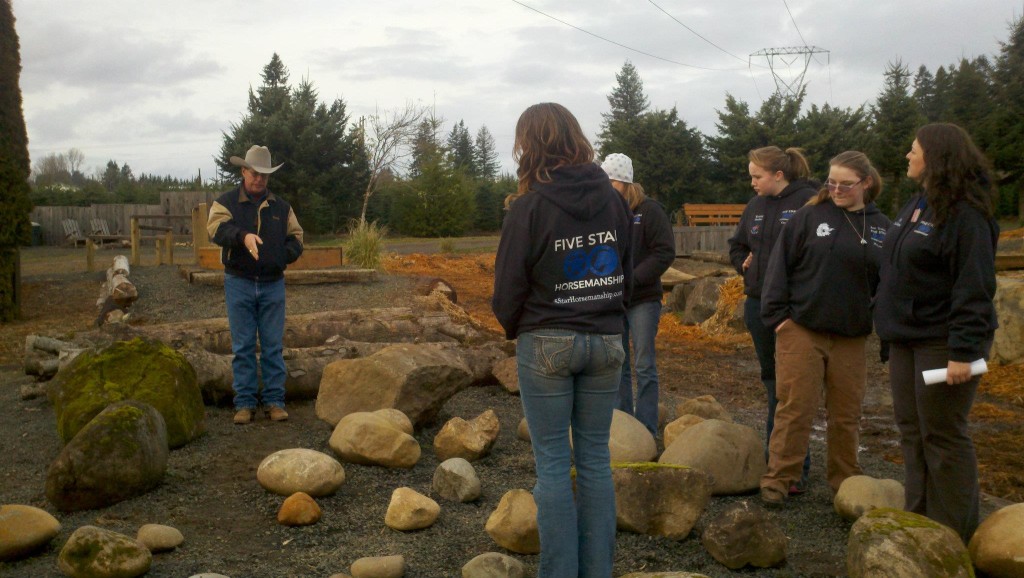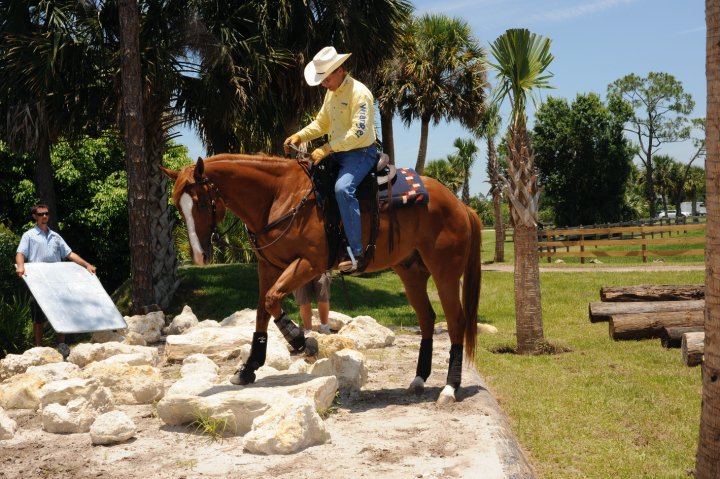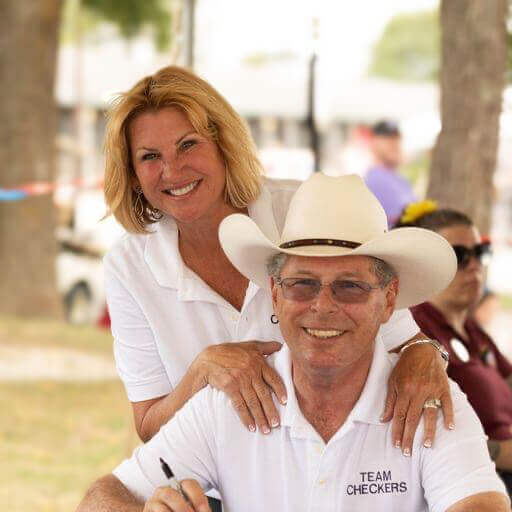Create Your Own Challenge and Learn Easy Tips for Mastery
With a little know-how, a rock obstacle is easy to construct and easy to master. I love this obstacle because it teaches a horse to slow down and think. It will teach the horse to carefully pick up and place its feet and also to think its way through. It’s a practical and useful training tool that almost anyone can construct (with some help on the heavy lifting).
The rock obstacle is made up of numerous large rounded rocks. I personally prefer an obstacle that has 50 to 75 boulders. These boulders should
be the size of soccer/ basketballs. In addition, the obstacle should also feature a few very large rocks. This challenge takes up a small space and can be sized from 12-20 feet wide and from 20-40 feet in length. I like to define the obstacle by elevating it from the surrounding area and by using poles, logs or rocks to mark its corners.

To master the rock obstacle, I always start from the ground and send the horse through. Make sure that you have the Bolender Bubble clearly established so the horse will not attempt to come out of the obstacle into your space. Concentrate by sending the horse through the obstacle and allow it to take time and think it through. Expect the horse to use its mind! Do not try to micro-manage the horse as to foot placement. The instinct of the horse will help guide it through and this is better without human interference. If the horse rushes through, demand that it slow down or make sure that it maintains focus on you so it does not rush and injure itself. Once the horse learns to think its way through and will carefully place its feet, then allow it to navigate the obstacle at its own pace. If you encounter problems, back up and slow down.
One way to back up this process and take it slow is to find a corner and have the horse walk through just a small portion of the obstacle. Do not try to force the horse for it will feel the pressure and revert to the instinctual mode of reacting and then thinking. This is not good for the horse and can result in injury; we have a great responsibility to protect and teach the horse.

When the horse is comfortable walking through the obstacle then it is time to ride. When in the saddle, take your time and do not try to force the horse through. Some horses are much more comfortable going through the obstacle when they can focus on the person, but when you are in the saddle these types often lose confidence. Start by asking your horse on a soft supporting rein. You must have the skills to allow the horse to drop its head, while maintaining a feel of the tongue, and be able to work the rein to help the horse and reassure it. If you are scared or nervous then have someone else ride the horse initially. A horse can feel a rider’s nervous heart beat and will become nervous itself.
In the beginning, ask the horse to just walk through a few rocks along the corner of the obstacle. Build from this small step until you can walk the horse down the middle of the obstacle. When the horse is very comfortable walking through the obstacle you can begin to fine-tune your execution and become even more specific. Mastering this obstacle will include the horse walking up to the rocks, dropping its head and acknowledging the obstacle and stepping into it without breaking gait. The horse should walk the straightest possible line through the obstacle, without touching a rock, and drop its head while stepping out of the obstacle in a nice forward, yet collected, manner.
Happy Trails and Bolender Blessings!

Mark and Lee Bolender own and operate Bolender Horse Park in Washington State, which houses the finest Mountain Trail course in the world. They are the founders of the International Mountain Trail Challenge Association (IMTCA) and travel worldwide as clinicians and ambassadors of Mountain Trail. Bolender Horse Park offers riders of all skill levels and disciplines a fun and challenging trail riding adventure.
Mark has designed and built Mountain Trail courses in the USA, Canada, Australia, and Europe—with many more in development. Mark uses his artistic, landscaping, horse training, and construction skills to build these courses (NW Steel Design LLC www.nwsteeldesign.com).
Mark is the author of Bolender’s Guide to Mastering Mountain and Extreme Trail Riding. Visit www.bolenderhorsepark.com to learn more.





